A panoramic sunroof is becoming more common in cars. And it’s not just the ultra-high-end vehicles that have it now, even some high-end trims of small crossover SUVs these days come with a panoramic sunroof. It certainly looks nice, and you get additional daylight when you drive which is nice as well. But what carmakers don’t talk about is the inherent downsides that come with panoramic sunroofs.
We’ll be discussing panoramic sunroofs in this post; from their why you should and shouldn’t have them, and ultimately help you decide whether or not they’re worth it!
Types Of Sunroofs
There are multiple types of sunroofs that carmakers offer. Some can slide open, others are fixed in place. The thing that may confuse some consumers is the difference between the sunroof and moonroof. These two terms are often interchangeable, although there’s a bit of difference:
Sunroof VS Moonroof
As mentioned, the terms are interchangeable. They both basically mean there’s a roof panel on top of your car that can let natural light in, so don’t worry too much about it. But there’s a bit of difference: a sunroof is technically a movable roof panel that can slide open that will let air and sunlight in.
This panel is usually an opaque glass panel, which lets very little light in when closed. But sometimes it may also be a solid body-colored panel. And in older cars and aftermarket sunroofs, it’s often made from fabric.
Meanwhile, the moonroof is technically a tinted glass roof panel. Since it’s tinted it’s darker than normal glass, but unlike opaque glass, it’s still transparent. So this lets in more light the opaque glass of sunroofs. When people say sunroof, they often actually mean moonroof since virtually all cars use tinted glass rather than opaque glass or body-colored panels nowadays.
But for the sake of simplicity (and because we’re used to it), we will refer to them simply as a sunroof in this post. Again, don’t worry too much about the terminology. If you want to learn more about how a sunroof works, watch the video below:
With that the terminology out of the way, here are the different types of sunroofs available:
Built-In Sunroof
This is one of the most common types of sunroofs you’ll see in cars, especially in mid-range vehicles from the mid-2000s. As the name suggests, the built-in sunroof means it will slide open into the inside of the roof of the car. These sunroofs are usually quite small, somewhere between 15×30 inches to about 20×38 inches.
This makes the built-in sunroof the nicest looking of all the sunroof designs, particularly when you open it. Sure, you don’t see it when you drive, but it’s much nicer looking as there’s no glass panel popping out of the roof when you open it.
But because the sunroof slides into the roof, this means the roof has to be thick enough to accommodate the sunroof when it opens. As such, it’s mostly available in larger cars. That brings us to the next type:
Spoiler Sunroof
A spoiler sunroof is similar in size to built-in sunroofs. The main difference is that that they slide upwards when opening rather than into the car’s roof construction. This means that you’ll see a glass panel popping out of the car’s roof when you open it.
While it might not look nice (for some people), it does mean that you don’t need a thick roof, meaning that you can fit this type of sunroof in virtually any car. This makes them a very popular option since it’s easier to install, and cheaper to produce for carmakers.
Pop-Up Sunroof
Both the built-in and spoiler sunroofs use electric motors to open the sunroof when the driver presses a switch. Meanwhile, the pop-up sunroof is much simpler: the roof panel is opened and closed manually using a lever hatch, although some older ones may use a rotary latch.
In any case, the process of opening the sunroof is completely manual. This makes them incredibly cheap and was quite popular in older cars and even today in the aftermarket scene. One such manufacturer is Webasto, a popular aftermarket sunroof maker.
While it’s cheap, the pop-up sunroof only, well, pops up a tiny bit to allow fresh air in. Unlike the built-in and spoiler sunroofs, it doesn’t slide open. So you’re getting a smaller amount of air and direct natural light.
Lamella Sunroof
This is probably the weirdest sunroof in this list, and that’s part of the reason why it’s not very common. The lamella sunroof features several glasses or opaque (or sometimes fabric) panels that can vent and slide back kind of like a set of Venetian blinds. Because it folds onto itself, it can be almost as big as a panoramic sunroof, and yet it can almost fully open.
However, the lamella sunroof is not very reliable and can be problematic. The lamella sunroof has far more moving components than a typical sliding sunroof. This means more parts can fail, leading to a failure when the sunroof won’t open – or worse, close.
This is the other reason why it’s not very common. It looks cool and is quite nice, but you won’t see it in modern cars because it’s unreliable. One notable car that uses the lamella-type sunroof was the Mercedes-Benz ML-Class SUV in the early 2000s.
Panoramic Sunroof
And finally, we get to the main topic of this article: the panoramic sunroof. Panoramic sunroofs are sunroofs with large tinted glass and take up almost – and sometimes – the entire roof panel. This allows a great amount of natural light to come into the car.
There are two kinds of panoramic sunroof: fixed and movable. Fixed ones cannot be opened, but they usually take up the entire roof panel, making the car feel like a convertible.
Movable ones mean that you can open the sunroof. But in the case of panoramic sunroofs, you can’t open the entirety of the sunroof. Often the front and rear part of the sunroof is separated, allowing the front part to slide open like a spoiler-type sunroof should the driver desire.
A movable panoramic sunroof is probably the most desirable type of all. Now, the reason that you’re here is probably that you’re on the fence on whether or not you should get a panoramic sunroof for your new car. Here are the benefits and downsides to take into consideration:
Benefits Of Panoramic Sunroof
Let’s be clear first: there are no performance benefits to having a panoramic sunroof. It’s an amenity to add pleasantness to the driving experience. With that being said, here are the benefits of having a panoramic sunroof:
1. It Makes The Car Feel More Open
A panoramic sunroof means you can see the sky above you as you drive. This gives the car an enhanced sense of openness since you get more view in the car as well as more natural light. It’s almost like driving a convertible car, but of course, you’re still protected from the rain should it come pouring down.
If you often feel cramped in a car, having a panoramic sunroof may help to fix that. The additional natural light it lets in may also make driving more pleasant for some people.
2. Additional Ventilation
If you’re the type of person that prefers to breathe in fresh air while you drive rather than air-conditioning air, a panoramic sunroof can serve as additional ventilation – provided that it’s a movable type that can open.
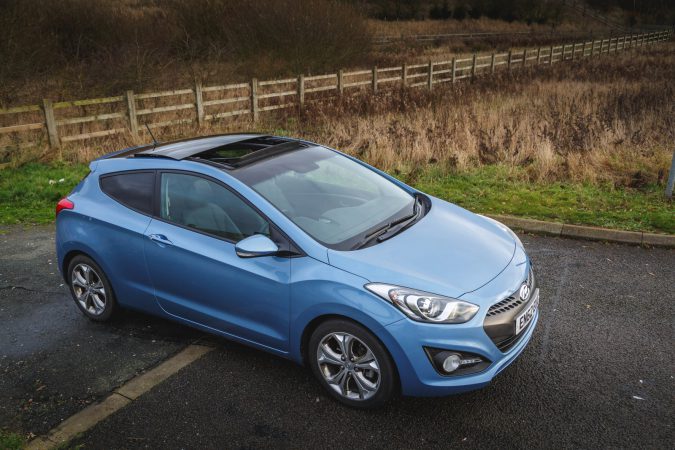
This means you can use the windows and sunroof to let fresh air in. An additional benefit is that opening the sunroof tends to be less noisy than opening the window. Also, the wind won’t directly hit your face as it would when you open the window, so that’s nice.
One last benefit from this is that it makes driving without air-conditioning more pleasant. This means you can afford to turn off the AC to save fuel. Keep in mind that opening the windows and sunroof increases drag which also makes the car use more fuel, but your fuel economy will only start to suffer at speeds of above 60mph.
3. It Makes Checking Your Roof Cargo Easier
This benefit will only apply if you use your car’s roof rack to carry cargo externally. If your car has a roof rack, you can use it to carry items outside of your car’s cabin and trunk, essentially an extra luggage space for your car.
Since panoramic sunroofs are transparent, you can take a quick glance above you to see if the cargo you’re carrying is starting to slide out of place. Saving you from the need to pull over on the side of the just to check whether or not your roof cargo is still there or not.
Sure, this is a very specific benefit, and not many people use their roof racks. At least, not on a daily basis. But if you do, having a panoramic sunroof will make your life easier.
4. It Can Serve As An Emergency Escape
This is a benefit that we hope you will never have to enjoy. But worst come to worst, the panoramic sunroof – a movable and open one that is – can serve as an emergency escape in certain scenarios.
One scenario is if you accidentally drive your car into a lake or body of water, or through a terrible flood where your car gets stuck. Once the car has sunk deep enough, it will be very difficult to open the door due to the difference in pressure inside the car and the water outside of it.
However, as long as the roof of your car hasn’t been submerged (and the electricity is still working), you can slide open the sunroof and escape from there. The sunroof won’t have any difficulty opening as long as it hasn’t been submerged since there’s no difference in pressure.
A quick tip: if you ever found yourself in this scenario, you can use your car’s headrest and use the metal peg to break the window. But it’s much safer to have a window-breaker tool in the car. Anyway, drive safely, we hope you don’t ever find yourself in this situation.
Downsides Of Panoramic Sunroof
Right, so those are the benefits. But what about the downsides? Well, if you were eager to get a car with a panoramic sunroof, sorry to tell you that there are quite a few. Here are the downsides of having a panoramic sunroof on your car that you should be aware of:
1. Additional Heat In The Cabin
While getting additional natural light in the car is nice, it comes with a downside: additional heat in the cabin. Sunlight is warm, which is nice on those cold days, but during the summer it will heat your cabin to uncomfortable levels pretty quickly.
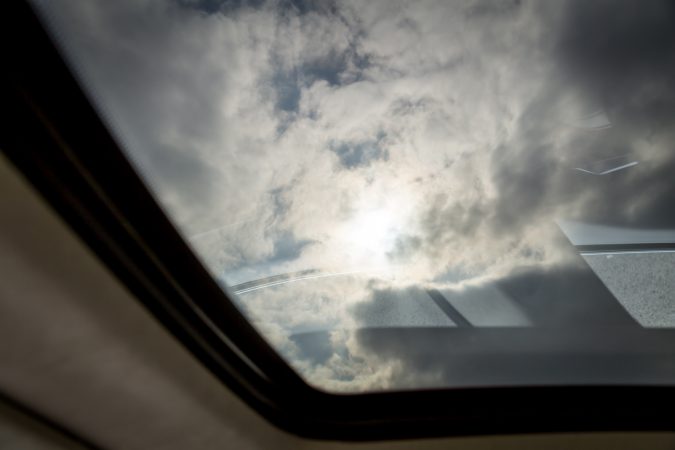
Of course, a lot of carmakers often include a sunshade for their panoramic sunroof. But this is only present mostly in cars where the panoramic sunroof doesn’t take up the entire roof of the car.
Also, some cars have a sunshade that’s basically a movable roof lining which then completely conceals the sunroof, preventing sunlight and heat from entering the cabin. But other cars have a mesh fabric sunshade, which reduces the amount of light and heat, but still allows them in.
This isn’t a big deal if you live somewhere that’s mostly cold. But if you live somewhere hot, and you don’t like the heat, this is something you need to consider.
2. It Adds Weight
Glass is incredibly heavy, and a panoramic sunroof can add up to an extra 220lbs to a car. And that’s just the glass panel; a car with a panoramic sunroof will require reinforcing bars, electric motors to open it, and often requires drainage channels that add even more weight.
If you didn’t know, adding that much weight can be detrimental to a car’s performance and fuel efficiency. More weight will make the car slower. Also, that extra weight will affect fuel efficiency as the car needs more energy to get going, which means using more fuel.
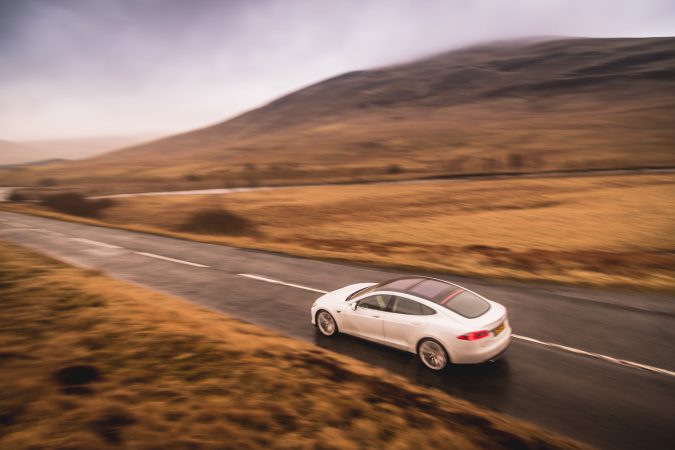
Additionally, it ruins the center of gravity of the car. In simple terms, it’s the point where the mass or weight of the car is concentrated. The lower they are, the better the car can handle as the weight is still evenly dispersed on all sides, resulting in less force that can upset the car when cornering. This is why sports cars and the components inside them sit as low as possible, to achieve that low center of gravity.
As you can imagine, installing a heavy glass panel on the top of the car ruins this as now there’s a lot of weight on top of the car. It’s probably not noticeable for most people, but the car definitely won’t be as stable as it could be.
3. Reduced Structural Integrity
Having a panoramic sunroof is essentially like having a gigantic hole on the top of your car. Sure, tempered glass is strong, but it’s still a giant hole in your car and is never going to be as strong as a normal roof.
This is why cars with panoramic sunroofs will often need reinforcing bars to strengthen the structure of the car, similar to convertibles. Reduced structural integrity affects several things, such as the handling and stability of the car.
It may also affect the car’s safety, especially in severe high-speed crashes, hence the need for reinforcing bars to make sure the car still has a good safety rating. Read our tips on how to be a safer driver on the road here.
Another problem is that rubber sunroof seals which are not 100% waterproof. They keep most water and moisture out, but it still needs those drainage channels. But the rubber seals will crack or come loose over time, and this may cause water to leak into the cabin. Although this will probably take a long time to start happening.
4. More Things To Go Wrong
As mentioned, the panoramic sunroof requires an electric motor to move it, along with other electrical switches and components to make that work, as well as other components such as guard rails and rubber seals.
All these components are more things to go wrong in your car, meaning there are more potential repairs that you will need to do in the future. Of course, it shouldn’t happen anytime soon if you’re buying a brand new car. But a design flaw may cause one or more parts of the sunroof to fail early.
Should You Get A Car With A Panoramic Sunroof?
So, should you get a panoramic sunroof for your car? As with any decision-making, you’ll have to see whether the benefits outweigh the downsides. As mentioned, a panoramic sunroof will provide additional natural light and make the car feel more spacious. Additionally, a movable panoramic sunroof can act as additional ventilation for the car.
The downsides are of course it can raise the cabin’s temperature due to sunlight coming in through it. Unless the sunroof has a sunshade, it will raise your cabin’s temperature to uncomfortable levels quite quickly on those hot summer days.
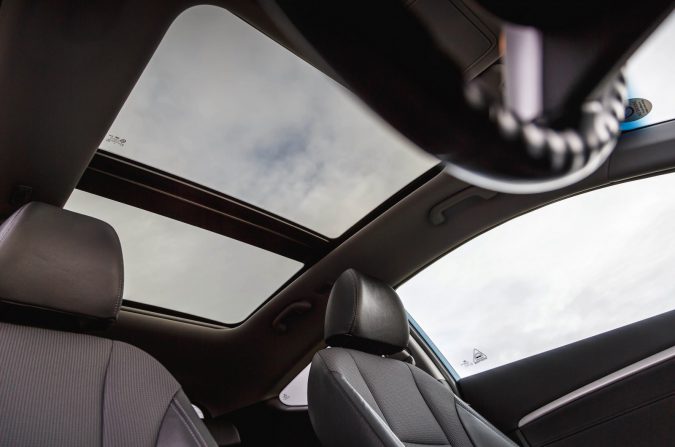
Ultimately, you’ll have to decide for yourself if the benefits are something you’re looking for and worth the tradeoffs. Our advice? Don’t mind the performance and fuel-efficiency tradeoff, as most people won’t notice that unless they’re a keen driver.
Instead, research the car you’re looking to buy and read online reviews whether the car has sunroof troubles. You can find these reviews on owner forums or the NHTSA’s website. For example, there are complaints about leaking sunroof on the VW Atlas after just a few months of ownership.
If there are no widespread horror stories on the car you’re looking to purchase, then, by all means, go ahead and get that panoramic sunroof.
How Much Does Panoramic Sunroof Cost?
You have two options: you can get a factory-installed panoramic sunroof, or get an aftermarket panoramic sunroof and install it later on. The former is usually the better option, as the manufacturer has probably spent a lot of time designing the sunroof for the car making sure it works properly.
So, how much does it cost? The exact cost will depend on the car’s make and model. But expect a factory-installed panoramic sunroof to add an extra $1,000 – $2,500 to the price of the car.
Meanwhile, aftermarket sunroof price will depend on the type of sunroof. A simple pop-up sunroof costs somewhere around $400 – $900. If you want something fancier, the spoiler sunroof with an electric motor costs somewhere between $700 to $1,100. As for aftermarket panoramic sunroofs, they will cost you anywhere between $1,000 – $3,000 depending on the brand and your car’s make and model. The Webasto Hollandia 500 for example starts at around $1,999.
While you can get aftermarket sunroofs, we generally don’t recommend them. Yes, this also includes sunroofs that are installed by the dealer after you purchase the car. Aftermarket sunroofs compromise the rigidity and structure integrity of your car. Cars with factory-installed sunroofs typically have reinforcing bars to counter this problem, but aftermarket sunroofs don’t.
Additionally, it’s quite common for aftermarket sunroofs to leak. While it would be nice to have a sunroof, we don’t believe that these potential problems are worth it.
Panoramic Sunroof Maintenance
Sunroofs typically don’t require much maintenance. I once had a car with a spoiler sunroof for five years and it never gave me any trouble. But if you have a movable/slideable sunroof (panoramic or other types), here are some things you can do to maintain it:
- Open the sunroof and clean the entire area, including the guard rails.
- Wipe down all moving parts and the gasket/rubber seals around the roof with a damp microfiber cloth.
- Use a small amount of lightweight and heat-resistant grease to lubricate the moving parts.
- If you see water spots on the glass (and want to know how to get water spots off car), use a glass cleaner to clean them. You can also apply glass protection to help keep it clean for the long run.
- Listen for unusual noises when you operate the sunroof. If there’s a popping or scraping sound, there may be debris stuck in the guard rails or the gears or it may need lubricating. If you can’t find an issue, refrain from using it and take it to a repair shop to find the problem. Best not to ignore unusual noises or you may find yourself with a sunroof that won’t close.
If you need a visual guide, the video above from 4DIYers is a great guide. It shows how to clean and lubricate your sunroof to keep it working smoothly.
Panoramic Sunroof: 6 Reasons to Avoid Them
- A panoramic sunroof increases heat entering the vehicle, which can be significant in hotter locations with clear skies.
- The installation of a panoramic sunroof can reduce headroom, particularly for taller drivers who may need to adjust their seating position.
- Panoramic sunroofs add weight to the vehicle, which can affect acceleration, braking, and fuel economy, and reduce stability and handling due to the added weight at the top of the car.
- Panoramic sunroofs can be noisy and more complex than conventional roofs, with added parts such as electric motors, switches, channels, and rollers for the sunshade and the main motor and sliding mechanism for the sunroof panel itself, which can cause rattling, squeaks, and flexing noises.
- A panoramic sunroof can reduce the structural integrity of the vehicle as it is essentially a giant hole in the roof that is not as strong as a conventional roof, and water drainage channels can clog and potentially cause leaks into the cabin.
- Panoramic sunroofs may not be used as much as anticipated since they are an “all or nothing” proposition, and leaving the sunroof open or tilted while parked may allow more heat to enter the vehicle than to expel. In addition, they can be too loud to have open at high speeds.
Panoramic Sunroof: In Conclusion
A panoramic sunroof is a great way to let natural light into your car, which can make driving more pleasant and improve your mood. It can also act as additional ventilation and makes checking your roof cargo a lot easier.
The tradeoffs with a panoramic sunroof are that it compromises your car’s performance and fuel efficiency since it affects the car’s balance and adds weight. While you might not feel it, the difference is there. Additionally, it affects the car’s structural integrity and can make driving on hot summer days rather unpleasant.
You’ll have to decide for yourself if the benefits of a panoramic sunroof are worth the tradeoffs or not. Our advice is that you read reviews from owners and see if there are any widespread horror stories. Also, we generally don’t recommend aftermarket sunroofs and get factory-installed ones instead.
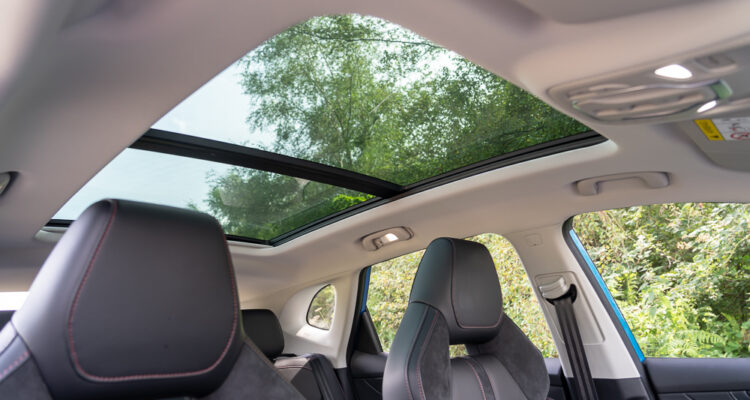







Well, I ‘ve got a factory panoramic sunroof on a car with just over 20,000 miles on it.
It had just let me close it– yet kept the sunshade in the open position when it stopped. So the dealer charged me for an evaluation and gave me a quote of $6,700 to fix it.
I was informed that the whole glass, tubes and steel cable etc must be replaced.
I heard that many cars share the same moon-roof manufacturer. I’ve owned about 12 cars with sunroofs and this will be my first and last panoramic one.
Well, I ‘ve got a factory panoramic sunroof on a car with just over 20,000 miles on it.
It had just let me close it– yet kept the sunshade in the open position when it stopped. So the dealer charged me for an evaluation and gave me a quote of $6,700 to fix it.
I was informed that the whole glass, tubes and steel cable etc must be replaced.
I heard that many cars share the same moon-roof manufacturer. I’ve owned about 12 cars with sunroofs and this will be my first and last panoramic one.
If someone could give me a reliable repair shop in the Sarasota/ Manatee area it would be appreciated. It just isn’t right to keep a cardboard piece from the Dollar Tree store in the sunshade’s place to keep the heat out in this ALFA ROMEO.